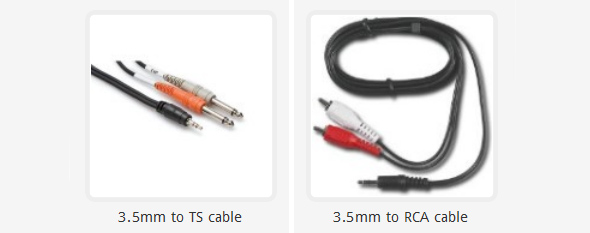iPads are turning up in the audio booth as a sound source. Much like my article on using different types of smartphones as audio sources, iPads are something you need to consider. Let’s look a how to get the audio out.
The iPad uses a common 3.5 mm stereo headphone plug, so connecting via the 3.5 mm plug is the easiest route to go.
The back of your mixer/console is filled with 1/4 -inch TRS plugs and RCA plugs. No 3.5 mm inputs so we are going to have to do a little conversion work.
A 3.5 mm stereo plug and a TRS plus look the same in that they have a tip, a ring, and a sleeve. You must understand, however, that these cables can be used in two different ways. One is to carry a stereo signal and the other is to carry a balanced signal.
In the case of the iPad, it’s got a headphone (stereo-out) plug and the audio mixer channel inputs are for balanced signals. Therefore, while it might be easy to think the cables work the same way because the plugs look the same, it’s like having two plastic pipes where one is used to carry drinking water and the other is to carry waste. Both might be PVC pipe but with different contents.
Time To Convert
There are a few ways you can convert that 3.5 mm stereo plug into something usable. You can go the route of an RCA cable or you can use two dual TS unbalanced plugs. Plug the 3.5 mm end into the iPad and the other into a stereo channel on the mixer.
For the 1/4-inch plug, go the route of a 3.5 mm stereo jack to dual 1/4-inch mono plugs. For the RCA plug, you can use the standard RCA adapter.
The Better (But More Expensive) Route
Using adapters, such as I’ve listed, is an effective way to get the signal into the mixer. However, there is a direct box that will help you with your signal levels as well.
That’s where the Radial ProAV2 DI box comes into play. Use a 3.5mm male-to-male end cable and plug one end into the iPad and the other end into the Radial DI, and it will convert the signal to the right type as well as convert the signal to the proper line level as pro and consumer-grade electronics usually output at different levels. The DI plugs into your mixer/console using a right and a left XLR cable.
Summary
Converting audio from an input device like an iPad to your board can be easy when you have the right tools at hand…and you know the type of signal that’s coming out of your equipment and the type of signal that’s expected to come in.
Ready to learn and laugh? Chris Huff writes about the world of church audio at Behind The Mixer. He covers everything from audio fundamentals to dealing with musicians, and can even tell you the signs the sound guy is having a mental breakdown. To view the original article and to make comments, go here._blank_blank






















